|
You’ve heard of Yellowstone. And you may be able to point to California’s Mono Lake and the Long Valley Caldera on a map. But very few people know where to find Valles Caldera, the third supervolcano in the U.S. It’s the big pimple in the north central part of New Mexico. Your Own Little Supervolcano A long time ago, New Mexico was a hotbed of volcanic activity. With the Rio Grande Rift pulling things apart and making the big river flow south from Colorado, and the Jemez Lineament (a flaw in the Earth’s crust) crossing the Rift at an angle, the “X” marked a weak point right where Valles Caldera would blow. And it blew quite violently too – but 1.25 million years ago, so no one was there to see it. That’s a good thing, because ash from the eruption landed as far away as Kansas. The La Jara and other plug domes formed after the huge eruption. Today you see La Jara as a tree-covered island in the caldera’s suspiciously-flat floor. 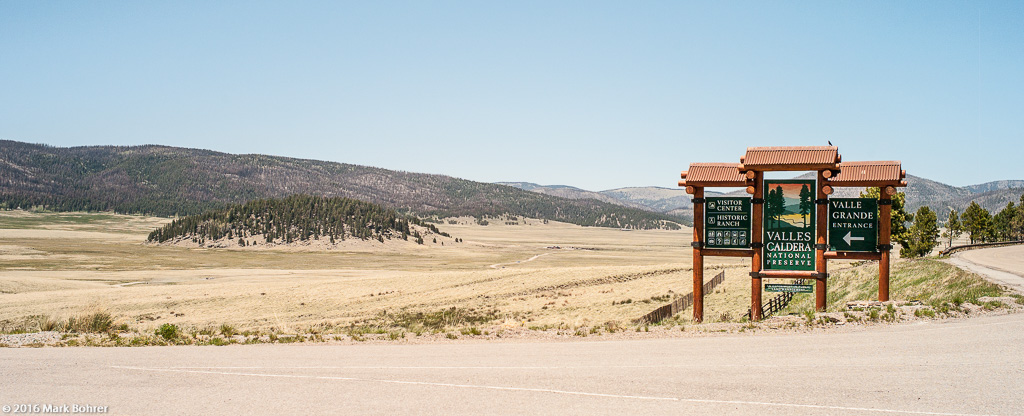 La Jara plug dome from entrance to Valles Caldera The Longmire Connection And Valles Caldera has other attractions. I’ve watched Netflix’s Longmire as long as it’s been on television and the web. It obviously isn’t shot in Wyoming where Craig Johnson’s Longmire novels happen, but quite a bit closer to my New Mexico home. I decided to see Walt Longmire’s cabin at Valles Caldera National Preserve, and take the last elk tour of the season. Management and Access The Preserve was managed by a board of trustees with presidentially-appointed membership from the state of New Mexico, National Park Service, and USDA Forest Service until late 2015. That’s when management transferred exclusively to the National Park Service. The Preserve became far more open to hikers that same year, when the outgoing board of trustees voted to expand access. 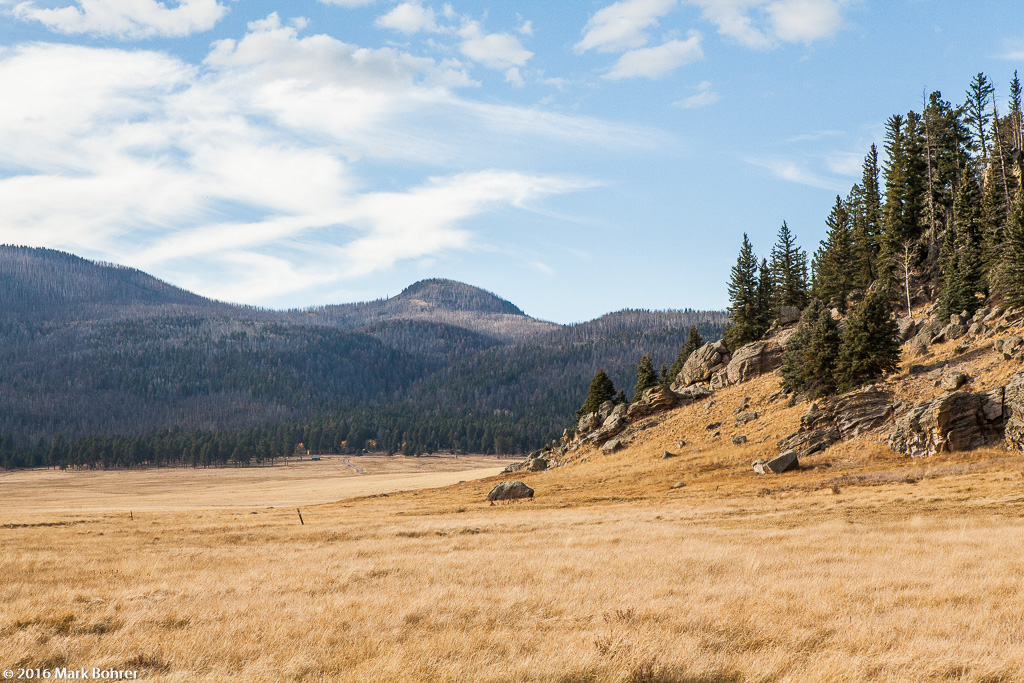 La Jara Trail view west Elk Tour The Preserve holds elk tours through the end of October. In normal years, it can be cold and snowy enough to bring the elk down from the high country to look for forage. This year brought an unseasonably-warm fall, though, so we weren’t sure what we’d see. We arrived early enough to hike the La Jara trail first, circling the plug dome in the middle of the caldera. Pleasant fall weather made it very comfortable. Besides watching the gorgeous scenery at 8700 feet, we had to keep our eyes open for coyote, elk, weasel, and prairie dog scat on the trail. Even if we ended up not seeing wildlife, we knew they’d been there. 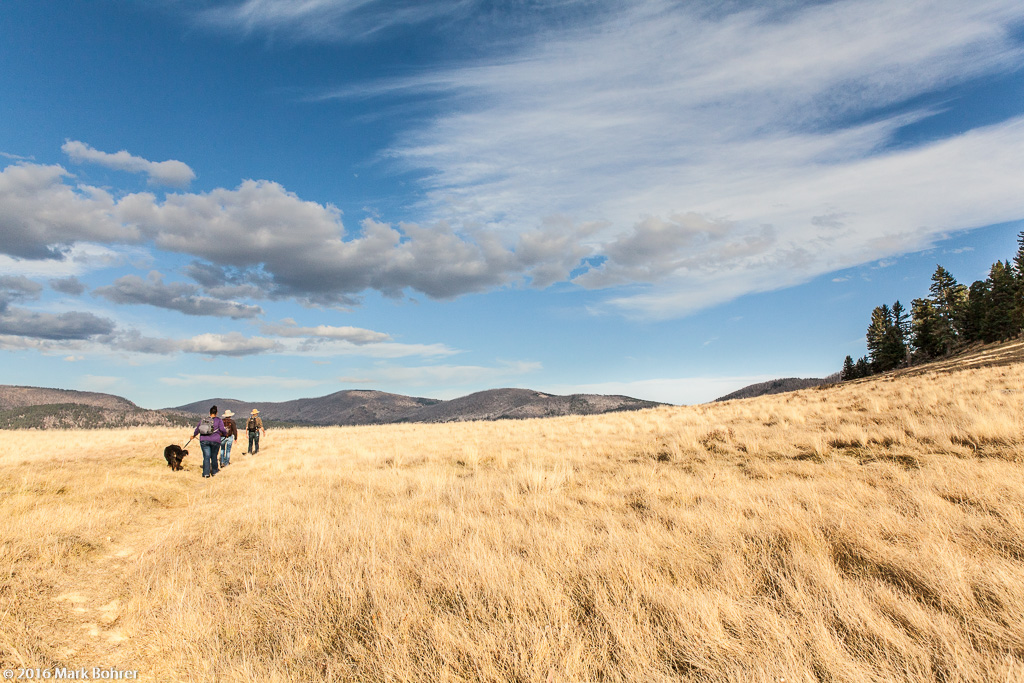 Looking east from La Jara Trail 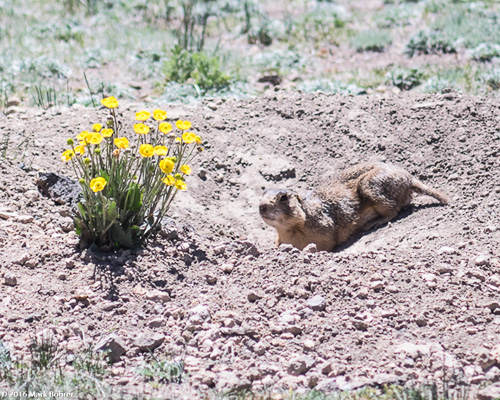 One of the locals The tour should have had ten people on it, but there were some no-shows. This made the tour van much more comfortable for photographers like me with long lenses. We saw a big chunk of the Preserve’s northwest side, including a stop at Longmire’s cabin, but the only visible elk were a bull and two cows a couple football fields away – much too far for good photography. Gorgeous cloud-filtered light on the mountains made it worthwhile anyway, even with the extensive burn from wildfires in 2011 and 2013. 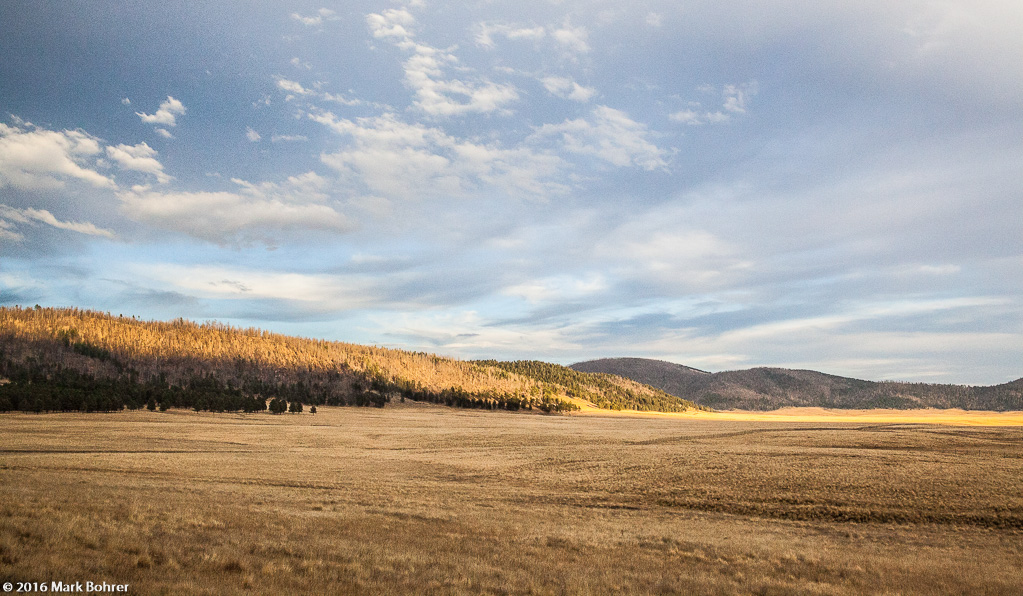 Knife-sliver of light The real treat was a stop at the ponderosa pines of History Grove near the end of the tour. The strangely high-pitched sounds of bugling elk made us all speak softly as we listened in that naturally-open forest. The day came to a muted sunset-colored ending. 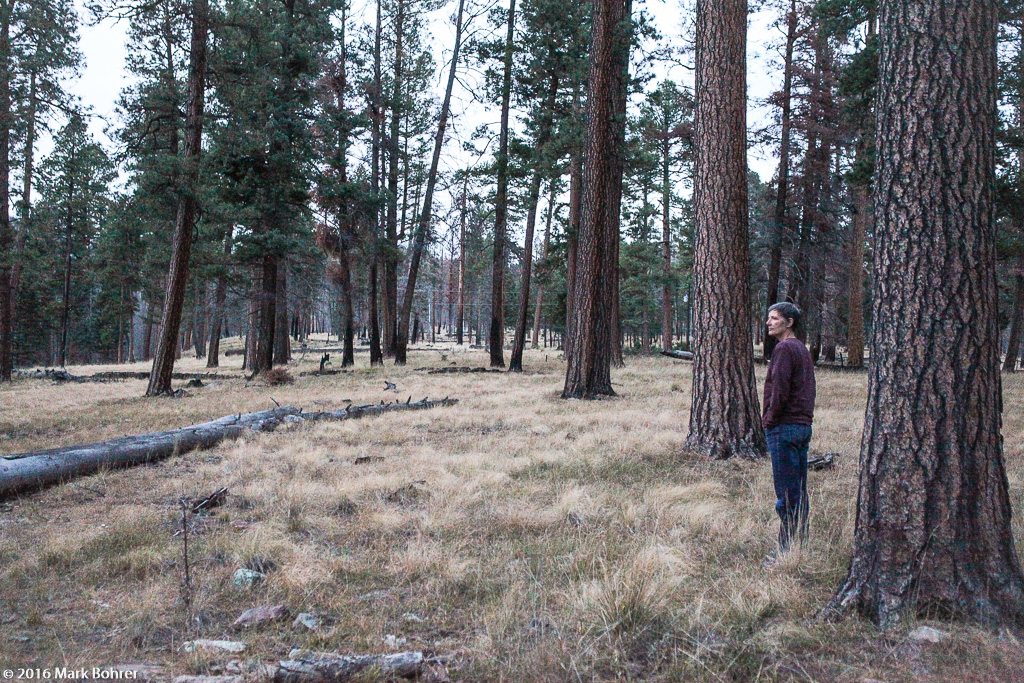 Listening to bugling elk in History Grove, Valles Caldera (The clip below from soundbible.com is similar to what we heard.) We’ll be back for snowshoeing and cross-country skiing in December or January. There’s quite a lot of the place to explore. More Information National Park Service, “Valles Caldera National Preserve”, retrieved from https://www.nps.gov/vall/index.htm “Teacher’s Guide to Valles Caldera: The Science”, retrieved from http://vcnpearthsystems.nmepscor.net/geology/geologic-history-of-jemez-volcanic-field T.S. Last, Albuquerque Journal, “Valles Caldera Opens Up”, May 15, 2015, retrieved from https://www.abqjournal.com/585054/wideopen-spaces-anyone.html |
(408) 483-3782
Curious about how to shoot ruins?(408) 483-3782

Recent Comments